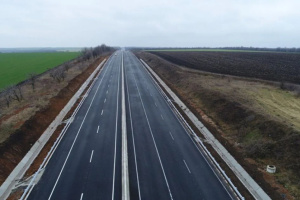
Euro-gauge Chop-Uzhhorod rail track to be launched in July – Deputy Finance Minister
Deputy Minister of Finance Oleksandr Kava said this in an interview with Ukrinform.
Ukraine is working to extend the European railway gauge to as many nearby cities as possible, Kava noted.
"Next month, the European-gauge Chop-Uzhhorod rail track is expected to be launched. This means passenger trains will be able to run directly from Uzhhorod to Budapest, Košice, Vienna, and Bratislava. Preparations are also underway for the construction of Euro-gauge rail in Chernivtsi and Lviv. I hope the next city will be Lutsk. This is a realistic plan that could ensure high-quality connectivity over the next 4–5 years," he said.
According to him, even after the war ends, fully converting the existing broad-gauge railway to European standard would be too costly and unnecessary. Broad-gauge transport is more efficient for freight: in the EU, freight trains usually weigh no more than 2,000 tons, while in Ukraine, trains often carry 5,000–6,000 tons — a significant factor in economic efficiency. Re-loading containers between gauges is not an issue, and the number of intermodal terminals on Ukraine’s borders with EU countries is steadily increasing.
He also pointed out that passengers experience a difference in comfort as well — Ukrainian trains, with widths of 3.20 to 3.50 meters, are more spacious than their European counterparts (2.80 meters).
“As for highways, unfortunately, on our side, we currently lack sufficient resources to build proper roads at least to the nearest regional centers — Lviv, Lutsk, Ternopil, or Rivne," Kava stated. He noted that the drive from Kyiv to Lviv now takes 7–8 hours, but with a European-standard highway, the journey could take only 4 hours.
Meanwhile, on the Polish side, several highway projects are underway: the high-speed S12 road from the suburbs of Lublin to Yahodyn-Dorohusk border crossing, the S17 road to Rava-Ruska (Warsaw–Lviv route), and the existing A4 highway to Krakivets crossing, from where travelers can drive 670 km across Poland to the German border in just 5 hours at 140 km/h.
As previously reported by Ukrinform, in 2025 Ukraine will need USD 17.3 billion to finance urgent recovery priorities, including housing, energy, infrastructure, transport, and social protection.




